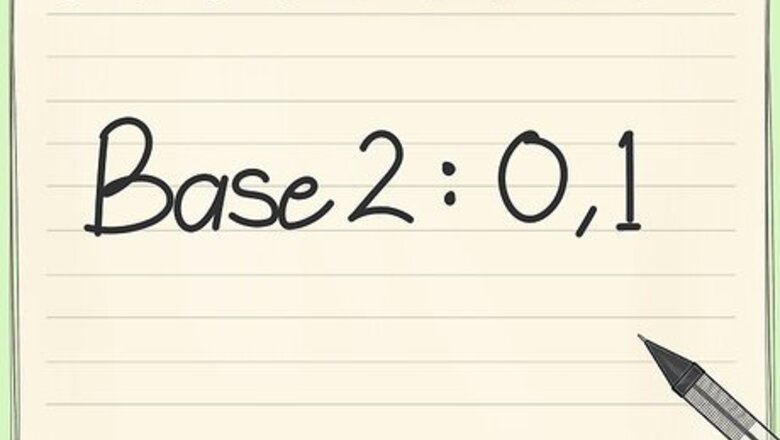
views
Learning Binary

Learn what binary means. Our normal counting system is called decimal, or "base ten." We have ten different symbols for writing numbers, ranging from 0 to 9. Binary is a "base two" system, using only the symbols 0 and 1.

Add one by changing the last 0 into a 1. If a binary number ends in 0, you can count one higher by changing this to a 1. We can use this to count the first two numbers just as you would expect: 0 = zero 1 = one For higher numbers, you can ignore the earlier digits of the number. 1010 + 1 = 1011.

Write another digit if all the numbers are one. Now we have "1" for one, but we've already run out of symbols! In order to count to two, we need to write another digit. Add a "1" to the front of the number, and "reset" all the other digits to 0. 0 = zero 1 = one 10 = two This is the same rule we use in decimal when we run out of symbols (9 + 1 = 10). It just happens a lot more often in binary because we run out of symbols sooner.

Use these rules to count to five. These rules will get you as far as the number five. See if you can do it yourself, then check your work: 0 = zero 1 = one 10 = two 11 = three 100 = four 101 = five
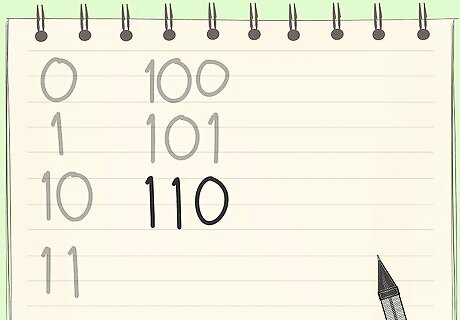
Count to six. Now we need to solve five + one in decimal, or 101 + 1. The key here is to ignore the first digit. Just add the 1 + 1 at the end to get 10. (Remember, this is how you write "two".) Now restore the first digit and you get: 110 = six
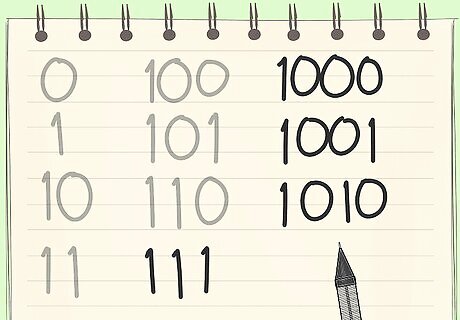
Count to ten. There are no new rules you need to learn. Try it yourself, then check your work with this list: 110 = six 111 = seven 1000 = eight 1001 = nine 1010 = ten
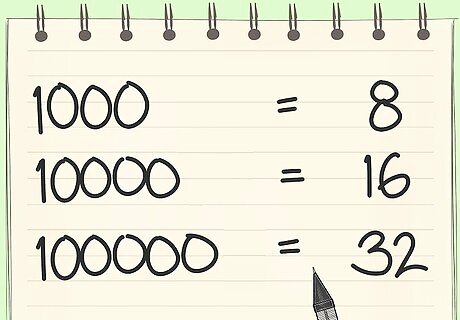
Notice when new digits get added. Do you see that ten (1010) doesn't look like a "special" number in binary? Eight (1000) is much more important now, because it equals 2 x 2 x 2. Keep multiplying by two to find other important numbers like sixteen (10000) and thirty-two (100000).

Practice with higher numbers. Now you know everything you need to count in binary. If you're ever confused about what comes next, just work out what happens to the last digits. Here are a few examples to help you out: twelve plus one = 1100 + 1 = 1101 (0 + 1 = 1, and the other digits stay the same.) fifteen plus one = 1111 + 1 = 10000 = sixteen (We've run out of symbols, so we reset to 0 and write a 1 at the start.) forty-five plus one = 101101 + 1 = 101110 = forty-six (We know 01 + 1 = 10, and the other digits stay the same.)
Converting from Binary to Decimal

Write down the value of each binary place. When you learned decimal counting, you learned about the "place values": the ones place, tens place, and so on. Since binary has two symbols, the place values multiply by two each time you move to the left: 1 is the ones place 10 is the twos place 100 is the fours place 1000 is the eights place
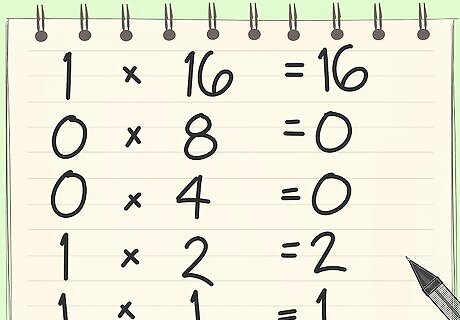
Multiply each digit by its place value. Start with the ones place on the far right, and multiply that digit (0 or 1) by one. On a separate line, move to the twos place, and multiply that digit by two. Repeat this pattern until you've multiplied each digit by its place value. Here's an example: What is the binary number 10011 in decimal? The rightmost digit is 1. This is in the ones place, so multiply by one: 1 x 1 = 1. The next digit is also 1. Multiply this by two: 1 x 2 = 2. The next digit is 0. Multiply this by four: 0 x 4 = 0. The next digit is also 0. Multiply this by eight: 0 x 8 = 0. The leftmost digit is 1. Multiply this by sixteen (eight times two): 1 x 16 = 16.

Add all the products together. Now you've converted each digit into its decimal value. To find the value of the full number, just add all the decimal values together. Here's the rest of your example: 1 + 2 + 16 = 19. The binary number 10011 is the same as the decimal number 19.




















Comments
0 comment